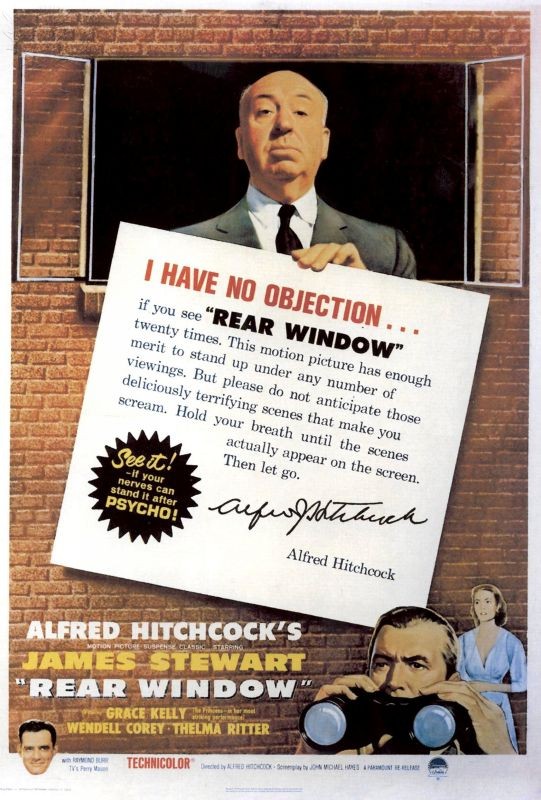LESSON ELEMENT FILM EDITING INSTRUCTIONS AND ANSWERS
CLASSROOM TESTED LESSON VIDEO DESCRIPTION “SECRETS OF THELESSON PLAN FORMAT FOR ELEMENTARY MIDDLE SCHOOL METHODS
SCIENCE LESSON PLAN IONIC AND COVALENT BODING
Teach Engineering Stem Curriculum Lesson Designing Bridges
UNIT SLAVERY LESSON 25 FREDERICK DOUGLASS (2
013_Spring1_UKS2_Yr5_Lesson_5
OCR A Level Film Studies Lesson Element - Editing

Lesson Element
Film Editing
Instructions and answers for teachers
These instructions cover the student activity section which can be found on page 4. This Lesson Element supports OCR A Level Film Studies.
When distributing the activity section to the students either as a printed copy or as a Word file you will need to remove the teacher instructions section.
Mapping to the specification level
Develop knowledge and understanding of film form and its key terms through studying the micro-element of editing.
Identify how editing constructs meaning and contributes to the aesthetics of film.
Introduction
Editing is fundamental to the ways in which meaning is constructed in film. Learners should become aware that directors combine different images together in particular sequences of shots to elicit specific emotional responses from audiences. An appreciation of the importance of editing can enable learners to extend their textual analysis of film in sophisticated ways.
C lassroom
activities will give learners the opportunity to explore how the
principal components of editing can generate multiple connotations
and suggest a range of interpretations. Learners will be introduced
to Alfred Hitchcock’s theories of film montage and in
particular, how the Kuleshov Effect operates to alter the
interpretation of individual shots within a sequence. Learners will
demonstrate their understanding by storyboarding their own
alternative sequences and to interpret the work of others.
lassroom
activities will give learners the opportunity to explore how the
principal components of editing can generate multiple connotations
and suggest a range of interpretations. Learners will be introduced
to Alfred Hitchcock’s theories of film montage and in
particular, how the Kuleshov Effect operates to alter the
interpretation of individual shots within a sequence. Learners will
demonstrate their understanding by storyboarding their own
alternative sequences and to interpret the work of others.
Teachers should view Hitchcock on the Kuleshov Effect – YouTube:
https://www.youtube.com/watch?v=L4AUnLNzi3U
The exercise for learners is based around this clip.
The activity
The aim of this lesson element is to provide an activity that will enable learners to:
Develop an understanding of how the Kuleshov Effect1 can create meaning through editing.
Consider how directors use editing to elicit emotional responses on the screen.
Soviet film-maker and film theorist Lev Kuleshov was among the first people to dissect the effects of juxtaposition within cinema. Through his early experiments and research, Kuleshov discovered that depending on how the shots are assembled within a sequence, the audience will attach different meanings or emotions to the same image.
Use the following extract from an interview with British film director, Alfred Hitchcock to provide a brief introduction and illustration of how the Kuleshov Effect works:
https://www.youtube.com/watch?v=L4AUnLNzi3U
On blank index cards, learners will each draw two identical copies of the following frames:
Frame 1. A close up of an expressionless face.
Frame 2. A close up of the same face, this time smiling.
Frame 3. A long shot of an object or of a person engaged in some kind of activity.
Learners will swap one of their copies of Frame 2 with a partner and then arrange the two sequences in order. With a different partner they can then analyse the different sequences to see what different connotations and meanings of the final frame are suggested when different Frame 2 shots are juxtaposed.
Extension task
An extension could require learners to produce an audio-visual version of their own Kuleshov experiments in the style of the Alfred Hitchcock clip.task
1 Various versions of the original Kuleshov Effect
editing example can be found on YouTube and Vimeo.
We’d
like to know your view on the resources we produce. By clicking on
‘Like’
or ‘Dislike’
you can help us to ensure that our resources work for you. When the
email template pops up please add additional comments if you wish
and then just click ‘Send’. Thank you.
Whether
you already offer OCR qualifications, are new to OCR, or are
considering switching from your current provider/awarding
organisation, you can request more information by completing the
Expression of Interest form which can be found here:
www.ocr.org.uk/expression-of-interest
Looking
for a resource? There is now a quick and easy search tool to help
find free resources for your qualification:

www.ocr.org.uk/i-want-to/find-resources/
Lesson Element
Film Editing
Student Activity
Introduction
Soviet film-maker and film theorist Lev Kuleshov was among the first people to dissect the effects of juxtaposition within film. Through his early experiments, Kuleshov discovered that depending on how the shots are assembled within a sequence through editing, the audience will attach different meanings or emotions to the same image.
Student task 1.1
Watch the following extract from an interview with British film director, Alfred Hitchcock in which he illustrates how the Kuleshov Effect works:
https://www.youtube.com/watch?v=L4AUnLNzi3U


Student task 1.2
On blank index cards, draw two identical copies of each of the following frames:
|
Frame 1 |
A close up of an expressionless face. |
|
Frame 2 |
A close up of the same face, this time smiling. |
|
Frame 3 |
A long shot of an object or of a person engaged in some kind of activity of your choice. |
Swap ONE of your copies of Frame 2 with a partner. Arrange the two sequences in order. What difference does the juxtaposition of the different Frame 2 shots make to the meanings you attach to Frame 3?
Show your two sequences to a different partner and discuss.
Extension task
Using your mobile phone or a digital camcorder film and edit your own Kuleshov experiment in the style of the Alfred Hitchcock clip.
Provide a director’s commentary explaining how you have used editing to create different meanings.
Version 1
1 EDTPA LESSON PLAN PROFESSIONAL GUIDELINES 72314 REVISED 8417
10 AMAZING LIFE LESSONS YOU CAN LEARN FROM ALBERT
10 MICRO I LESSON 3 PREFERENCES LESSON 2
Tags: answers for, lesson, answers, element, instructions, editing
- SMART PACKAGING – INTELLIGENT PACKAGING FOR FOOD BEVERAGES PHARMACEUTICALS
- SLOVAK ORTHOPAEDIC AND TRAUMATOLOGIC SOCIETY FOOT AND ANKLE SECTION
- GESTIÓN JURIDICA GESTIÓN DEL PROCESO ADMINISTRATIVO DE COBRO COACTIVO
- 10 PRONUNCIAMIENTO Nº 4202013DSU ENTIDAD FUERZA AÉREA DEL PERÚ
- INDIVIDUALIZED LEARNING PLAN FOR REASONING THROUGH LANGUAGE ARTS TEACHER
- NATIONS UNIES HAUT COMMISSARIAT AUX DROITS DE L’HOMME UNITED
- 2018 REGLAMENT REGULADOR DEL CONSELL MUNICIPAL DE TERRITORI I
- COTILLÓN EN LA SALA TUNK (IRUN) LUGAR
- PUBLIC SERVICE ANNOUNCEMENTS WINTER STORMS SCRIPT ESTA ES UNA
- 2 COMISIÓN INTERAMERICANA DE DERECHOS HUMANOS OEASERLVII DOC 44
- HISTORIA DEL MUNDO CONTEMPORÁNEO 1° DE BACHILLERATO PROGRAMACIÓN MUESTRA
- ANSWER KEY FOR PROBLEM SET 3 ANALYTICAL PROBLEMS 1
- DIRECCIÓN NACIONAL DE ATENCIÓN DE PRIMER NIVEL EN SALUD
- ESCOLA D’ADULTS FONDO PREINSCRIPCIÓ CURS 2014 15 JUNY
- 2020 GOVERNOR’S SCHOLARS PROGRAM PARENTGUARDIAN PERMIT AND WAIVER
- ARBEITSHILFE ZUR QUALITÄTSSICHERUNG ARBEITSHILFE DER BUNDESAPOTHEKERKAMMER ZUR QUALITÄTSSICHERUNG
- NA TEMELJU ČLANKA 66 ZAKONA O POLJOPRIVREDI („NARODNE NOVINE“
- POWERPLUSWATERMARKOBJECT3 POSITION TITLE CLINICALCOUNSELLINGFORENSIC PSYCHOLOGIST CLINICALCOUNSELLINGFORENSIC PSYCHOLOGIST (REGISTRAR) CLASSIFICATION
- DOCUMENTO PROGRAMMATICO SULLA SICUREZZA AI SENSI DEL DLGS 19603
- DECLARACIÓN DE RÍO SOBRE EL MEDIO AMBIENTE Y EL
- AGENCIA PROVINCIAL DE LLEIDA MAYCA CRUZ TR MATERIALES NO
- CÓDIGO CIVIL LIBRO SEGUNDO DE LOS BIENES DE LA
- COMENTARIOS A LOS RECORTES A LA LEY DE DEPENDENCIA
- EXCMA DIPUTACION PROVINCIAL AREA DE HACIENDA RRHH Y RINTERIOR
- I CONFERÊNCIA NACIONAL DOS DIREITOS DA PESSOA COM DEFICIÊNCIA
- PATIENT FOCUS GROUP REPORT FOR PERIOD APRIL 2016
- CARROLL COUNTY MEMORIAL HOSPITAL CORPORATE COMPLIANCE & POLICY SECTIONNO
- COMMUNITY RIGHT TO BID EXPRESSION OF INTEREST FORM
- AYLESHAM MEDICAL PRACTICE PRIVACY NOTICE DIRECT CARE
- CONTRATO DE TRANSFERENCIA TEMPORAL DE DATOS PERSONALES1 ENTRE LOS
RIDGEVIEW MIDDLE SCHOOL MATHEMATICS DEPARTMENT ESTIMADOS PADRESGUARDIANES LAS CALCULADORAS
OEWGI4 DECISIÓN VI23 PREPARACIÓN DE DIRECTRICES TÉCNICAS PARA EL
MOD LMU03 DICHIARAZIONE PERSONALE PER LA DETERMINAZIONE DEL PUNTEGGIO
 COMMISSION CONSULTATIVE DES RADIOCOMMUNICATIONS GROUPE DE TRAVAIL SUR LE
COMMISSION CONSULTATIVE DES RADIOCOMMUNICATIONS GROUPE DE TRAVAIL SUR LEHOUSING AND HEALTH IN OLDER PEOPLE AGEING IN PLACE
VOTE WOMEN VOTE WOMEN DETAILS OF APPROPRIATIONS AND CAPITAL
LOS ORÍGENES MARAVILLOSOS DE LA V DINASTÍA SEGÚN EL
 300URBANISMO REF MOD 39PGOU MJNJAVG ANUNCIO EL PLENO DEL
300URBANISMO REF MOD 39PGOU MJNJAVG ANUNCIO EL PLENO DEL TÍTULO MODELO DE INCORPORACIÓN DE TIC EN EL PROCESO
TÍTULO MODELO DE INCORPORACIÓN DE TIC EN EL PROCESOVERTRETUNG § 170 DER KOMMANDITIST IST ALS SOLCHER NICHT
ROSA DEULOFEU PARE NOSTRE CALDES DE MONTBUI 1995 INTRODUCCIÓ
OCTOBER 2016 LAKELAND RIFLE AND PISTOL CLUB RANGE SAFETY
HIPAA BACKGROUND MATERIALS 6 VERSION 3 01062005 DEFINITION
SOURCE CHAIRMAN ROADMAP FOR MEXE R98 APPROVAL 1 BACKGROUND
 AGRICULTURE GENDER MARKER TIP SHEET GENDER EQUALITY IN THE
AGRICULTURE GENDER MARKER TIP SHEET GENDER EQUALITY IN THE TRÁMITES Y SERVICIOS MUNICIPALES UNIDAD ADMINISTRATIVA DESARROLLO RURAL FECHA
TRÁMITES Y SERVICIOS MUNICIPALES UNIDAD ADMINISTRATIVA DESARROLLO RURAL FECHAAPPLICATION FORM FOR JOINING THE CHOOSING OF ASICON 2021
PLANTÃO 2º GRAU PLANTÃO JUDICIÁRIO DE 06 DE JANEIRO
DER GSCHICHTENTANDLER EINE UNTERHALTSAME THEATERBEGEGNUNG MIT ROMAN WUKETICH FÜR
 OFFICIAL STATISTICS RELEASE POLICY AREA CHILDREN’S SOCIAL CARE (EXCLUDING
OFFICIAL STATISTICS RELEASE POLICY AREA CHILDREN’S SOCIAL CARE (EXCLUDING